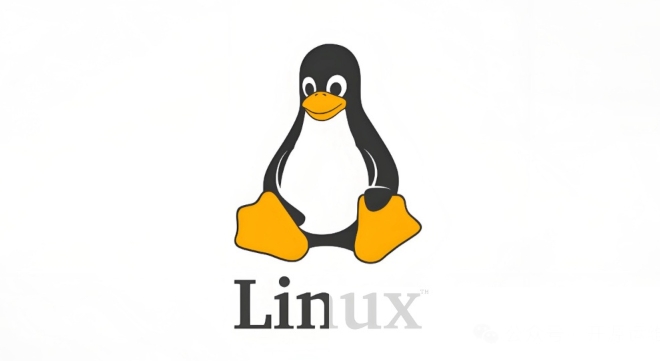To successfully cross-compile the embedded Linux system, you must 1. Obtain the cross-compilation toolchain (such as arm-linux-gnueabihf-gcc) suitable for the target architecture, which can be installed through the package manager or built using tools such as Buildroot; 2. Prepare the sysroot of the target system, including header files and library files, and specify the path through --sysroot or environment variables CC and CFLAGS; 3. Use the cross-compiler when compiling a simple program and verify the generated binary file format. For libraries, you need to configure the --host and --sysroot parameters, and set PKG_CONFIG_SYSROOT_DIR and PKG_CONFIG_PATH to ensure the correct dependency search; 4. Use CMake or Meson to build systems in large projects, and define the compiler, target architecture and sysroot paths through toolchain files or cross files to achieve automation; finally, you need to always verify the binary file, avoid soft and hard floating point ABI confusion, use a unified toolchain to generate the environment and correctly configure the path to prevent runtime errors. The key to the entire process is to accurately set the toolchain, sysroot and build system configurations, and it can be reused efficiently after completion.

Cross-compiling for embedded Linux systems is essential when your target device has limited resources—like low RAM, slow CPU, or no native compiler—and you need to build software on a more powerful host machine (usually x86_64) for a different architecture (like ARM, MIPS, or RISC-V).

Here's how to set it up and get it working smoothly.
1. Understand the Cross-Compilation Toolchain
A cross-compilation toolchain is a set of tools (compiler, linker, assembler, etc.) that runs on your host system but produces binaries for a different target architecture.

Key components:
- GCC cross-compiler (eg,
arm-linux-gnueabihf-gcc) - Binutils (assembler, linker, etc.)
- C library (usually glibc or musl, pre-compiled for the target)
- Header files from the target's kernel and C library
You can either:

- Use a pre-built toolchain (recommended for beginners)
- Build your own using tools like crosstool-NG or Buildroot
Example: For a 32-bit ARM device using hard-float ABI, you'd use the
arm-linux-gnueabihf-toolchain prefix.
Install a common one on Ubuntu/Debian:
sudo apt install gcc-arm-linux-gnueabihf
Test it:
arm-linux-gnueabihf-gcc --version
2. Set Up the Target Root Filesystem (sysroot)
To compile programs that use libraries (like libc , libpthread , etc.), you need access to the target's headers and libraries. This is called the sysroot .
The sysroot is typically a copy of the target's root filesystem, or built using:
- Buildroot
- Yocto Project
- Manually copied from the device
Once you have it, point the compiler to it:
arm-linux-gnueabihf-gcc -I$SYSROOT/usr/include \
-L$SYSROOT/usr/lib \
-sysroot $SYSROOT \
hello.c -o helloOr set it globally:
export CC=arm-linux-gnueabihf-gcc export CFLAGS="--sysroot=$SYSROOT"
This ensures the compiler and linker find the right headers and libraries.
3. Cross-Compile Simple Programs and Libraries
For a basic C program:
// hello.c
#include <stdio.h>
int main() {
printf("Hello, embedded Linux!\n");
return 0;
}Compile:
arm-linux-gnueabihf-gcc --sysroot=$SYSROOT hello.c -o hello
Check the output:
file hello # Output: ELF 32-bit LSB executable, ARM, EABI5, ...
For libraries (eg, OpenSSL, zlib):
Use the library's build system with cross-compilation options.
Example with configure :
./configure --host=arm-linux-gnueabihf \
--prefix=/usr \
--sysroot=$SYSROOT
Make
make install DESTDIR=$SYSROOTNote: Not all projects handle
--sysrootwell. You may need to manually setPKG_CONFIG_LIBDIRand adjust paths.
Set environment for pkg-config:
export PKG_CONFIG_SYSROOT_DIR=$SYSROOT export PKG_CONFIG_PATH=$SYSROOT/usr/lib/pkgconfig
This helps pkg-config find .pc files in the sysroot.
4. Automate with Build Systems
For larger projects, use build systems that support cross-compilation:
CMake
Create a toolchain file :
# toolchain-arm.cmake
set(CMAKE_SYSTEM_NAME Linux)
set(CMAKE_SYSTEM_VERSION 1)
set(CMAKE_SYSTEM_PROCESSOR arm)
set(CMAKE_C_COMPILER arm-linux-gnueabihf-gcc)
set(CMAKE_CXX_COMPILER arm-linux-gnueabihf-g)
set(CMAKE_SYSROOT /path/to/sysroot)
set(CMAKE_FIND_ROOT_PATH ${CMAKE_SYSROOT})
set(CMAKE_FIND_ROOT_PATH_MODE_PROGRAM NEVER)
set(CMAKE_FIND_ROOT_PATH_MODE_LIBRARY ONLY)
set(CMAKE_FIND_ROOT_PATH_MODE_INCLUDE ONLY)Then build:
cmake -DCMAKE_TOOLCHAIN_FILE=toolchain-arm.cmake .. Make
Meson
Create a cross file arm-linux.ini :
[binaries] c = 'arm-linux-gnueabihf-gcc' cpp = 'arm-linux-gnueabihf-g' ar = 'arm-linux-gnueabihf-ar' strip = 'arm-linux-gnueabihf-strip' [host_machine] system = 'linux' cpu_family = 'arm' cpu = 'armv7' endian = 'little'
Build:
meson setup --cross-file arm-linux.ini build ninja -C build
Final Tips
- Always verify the output binary with
fileand test on target hardware. - Watch out for floating-point ABI mismatches (soft vs hard-float).
- Use Buildroot or Yocto to generate consistent toolchains and sysroots.
- Avoid mixing host and target headers/libraries—this causes runtime crashes.
- Debug with
strace,gdb, or cross-gdb (arm-linux-gnueabihf-gdb)gdbserveron target.
Basically, cross-compiling boils down to:
? Right toolchain
? Correct sysroot
? Proper build system configuration
Once set up, it becomes routine. The trickiest part is getting the sysroot and library paths just right—especially with third-party dependencies.
The above is the detailed content of How to Cross-Compile for Embedded Linux Systems. For more information, please follow other related articles on the PHP Chinese website!

Hot AI Tools

Undress AI Tool
Undress images for free

Undresser.AI Undress
AI-powered app for creating realistic nude photos

AI Clothes Remover
Online AI tool for removing clothes from photos.

Clothoff.io
AI clothes remover

Video Face Swap
Swap faces in any video effortlessly with our completely free AI face swap tool!

Hot Article

Hot Tools

Notepad++7.3.1
Easy-to-use and free code editor

SublimeText3 Chinese version
Chinese version, very easy to use

Zend Studio 13.0.1
Powerful PHP integrated development environment

Dreamweaver CS6
Visual web development tools

SublimeText3 Mac version
God-level code editing software (SublimeText3)

Hot Topics
 Install LXC (Linux Containers) in RHEL, Rocky & AlmaLinux
Jul 05, 2025 am 09:25 AM
Install LXC (Linux Containers) in RHEL, Rocky & AlmaLinux
Jul 05, 2025 am 09:25 AM
LXD is described as the next-generation container and virtual machine manager that offers an immersive for Linux systems running inside containers or as virtual machines. It provides images for an inordinate number of Linux distributions with support
 How to create a self-signed SSL certificate using OpenSSL?
Jul 03, 2025 am 12:30 AM
How to create a self-signed SSL certificate using OpenSSL?
Jul 03, 2025 am 12:30 AM
The key steps for creating a self-signed SSL certificate are as follows: 1. Generate the private key, use the command opensslgenrsa-outselfsigned.key2048 to generate a 2048-bit RSA private key file, optional parameter -aes256 to achieve password protection; 2. Create a certificate request (CSR), run opensslreq-new-keyselfsigned.key-outselfsigned.csr and fill in the relevant information, especially the "CommonName" field; 3. Generate the certificate by self-signed, and use opensslx509-req-days365-inselfsigned.csr-signk
 7 Ways to Speed Up Firefox Browser in Linux Desktop
Jul 04, 2025 am 09:18 AM
7 Ways to Speed Up Firefox Browser in Linux Desktop
Jul 04, 2025 am 09:18 AM
Firefox browser is the default browser for most modern Linux distributions such as Ubuntu, Mint, and Fedora. Initially, its performance might be impressive, however, with the passage of time, you might notice that your browser is not as fast and resp
 How to troubleshoot DNS issues on a Linux machine?
Jul 07, 2025 am 12:35 AM
How to troubleshoot DNS issues on a Linux machine?
Jul 07, 2025 am 12:35 AM
When encountering DNS problems, first check the /etc/resolv.conf file to see if the correct nameserver is configured; secondly, you can manually add public DNS such as 8.8.8.8 for testing; then use nslookup and dig commands to verify whether DNS resolution is normal. If these tools are not installed, you can first install the dnsutils or bind-utils package; then check the systemd-resolved service status and configuration file /etc/systemd/resolved.conf, and set DNS and FallbackDNS as needed and restart the service; finally check the network interface status and firewall rules, confirm that port 53 is not
 How would you debug a server that is slow or has high memory usage?
Jul 06, 2025 am 12:02 AM
How would you debug a server that is slow or has high memory usage?
Jul 06, 2025 am 12:02 AM
If you find that the server is running slowly or the memory usage is too high, you should check the cause before operating. First, you need to check the system resource usage, use top, htop, free-h, iostat, ss-antp and other commands to check CPU, memory, disk I/O and network connections; secondly, analyze specific process problems, and track the behavior of high-occupancy processes through tools such as ps, jstack, strace; then check logs and monitoring data, view OOM records, exception requests, slow queries and other clues; finally, targeted processing is carried out based on common reasons such as memory leaks, connection pool exhaustion, cache failure storms, and timing task conflicts, optimize code logic, set up a timeout retry mechanism, add current limit fuses, and regularly pressure measurement and evaluation resources.
 Install Guacamole for Remote Linux/Windows Access in Ubuntu
Jul 08, 2025 am 09:58 AM
Install Guacamole for Remote Linux/Windows Access in Ubuntu
Jul 08, 2025 am 09:58 AM
As a system administrator, you may find yourself (today or in the future) working in an environment where Windows and Linux coexist. It is no secret that some big companies prefer (or have to) run some of their production services in Windows boxes an
 How to Burn CD/DVD in Linux Using Brasero
Jul 05, 2025 am 09:26 AM
How to Burn CD/DVD in Linux Using Brasero
Jul 05, 2025 am 09:26 AM
Frankly speaking, I cannot recall the last time I used a PC with a CD/DVD drive. This is thanks to the ever-evolving tech industry which has seen optical disks replaced by USB drives and other smaller and compact storage media that offer more storage
![Installation and Review of Q4OS Linux [Lightweight Distro]](https://img.php.cn/upload/article/001/242/473/175150507396452.jpg?x-oss-process=image/resize,m_fill,h_207,w_330) Installation and Review of Q4OS Linux [Lightweight Distro]
Jul 03, 2025 am 09:11 AM
Installation and Review of Q4OS Linux [Lightweight Distro]
Jul 03, 2025 am 09:11 AM
Q4OS is a new Linux distribution that’s based on Debian; a common base that’s shared with other distributions like Ubuntu and Linux Mint. It’s aimed at users who just want a simple, stable, easy to use Linux operating system that they can convenientl






